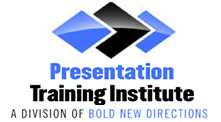Creating presentations that drive post-meeting action is essential for ensuring that the information presented during the presentation is effectively communicated in a way that inspires action and change. A well-designed presentation can motivate listeners to take action, make decisions, and implement changes based on the content that was presented. Here we will take a look at some strategies for creating presentations that drive action and encourage participants to follow through long after the presentation has concluded.
Know Your Purpose
First and foremost, you need to know what you hope to accomplish as a result of your presentation. What is the main message you want to convey? What is the problem you want to solve? How do you want the audience to feel? What is the change you want to create? Having a clear purpose and objectives will allow you to tailor your message in a way that effectively communicates your key takeaways and motivates your audience to take action.
Know Your Audience
It is also important to know your audience and what they care about. What is their background? What are their goals? What are their expectations and preferences? Knowing your audience will help you tailor your content, tone, and style to meet their needs and connect with them.
Focus on a Compelling Narrative
It is also important for presenters to structure their presentation in a way that tells a cohesive and compelling story. You want to capture the audience’s attention right from the start, and use this technique to spark curiosity and evoke emotions. By framing the content in a narrative format, presenters can create a more memorable and impactful presentation that resonates with the audience and inspires action.
Emphasize Key Action Items
Throughout the presentation, presenters should emphasize key messages and action items so listeners understand the key takeaways and have a clear understanding of expectations. This can involve highlighting key points, summarizing the most important content, and ending with a clear call to action. This can be a request, recommendation, or a challenge. The call to action should be aligned with your purpose and should be specific, actionable, and urgent.
Creating presentations that drive post-meeting action requires careful planning, clear communication, engaging storytelling, and a specific call to action. By focusing on these strategies, presenters can create presentations that inspire and motivate listeners to take action, make decisions, and implement changes. For more presentation tips and strategies, sign up for one of our Presentation Training courses. Let us help you maximize the impact of your presentations to drive action and deliver better results. Call today to learn more about training courses!
